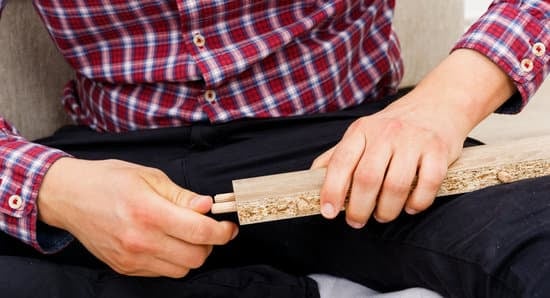A cash-out refinance can be used to make home improvements by tapping into the equity built up in a property. This type of refinancing allows homeowners to borrow more than their existing mortgage balance, receiving the difference in cash. Unlike traditional refinancing, which typically aims to secure a lower interest rate or shorter loan term, a cash-out refinance provides homeowners with access to additional funds for various purposes, such as renovating their home.
One of the key benefits of a cash-out refinance is the flexibility it offers in using the released equity. Homeowners can use the cash towards upgrading their living space, increasing property value, or even consolidating high-interest debts. This financial maneuver can help individuals achieve their home improvement goals without resorting to higher-interest loans or credit cards. In addition, utilizing a cash-out refinance may result in potential tax benefits depending on how the funds are used.
However, before considering a cash-out refinance for home improvements, homeowners must meet certain eligibility requirements set by lenders. These criteria often include having a minimum amount of equity in the property, maintaining a good credit score, and demonstrating sufficient income to repay the new loan amount. By understanding these qualifications upfront, individuals can determine if they are eligible for this type of refinancing and proceed accordingly with their renovation plans.
Benefits of a Cash-Out Refinance
A cash-out refinance can be a valuable tool for homeowners looking to access additional funds for various purposes, including making home improvements. Unlike other refinancing options that simply replace your current mortgage with a new one, a cash-out refinance allows you to borrow more than what you currently owe on your home and receive the difference in cash.
This can be especially useful for homeowners who have built up equity in their property over time and want to put that value towards enhancing their living space.
Enhancing Your Property Value
One of the main benefits of using a cash-out refinance for home improvements is the potential to increase the overall value of your property. By investing in renovations, upgrades, or additions to your home, you can not only create a more comfortable and functional living space for yourself and your family but also boost your home’s market value.
This can be particularly advantageous if you are considering selling your home in the future, as these improvements can make your property more attractive to potential buyers and potentially lead to a higher resale price.
Flexible Use of Funds
Another advantage of a cash-out refinance is the flexibility it provides in terms of how you can use the funds. While some homeowners may choose to use the money specifically for home improvement projects like kitchen remodels, bathroom renovations, or backyard landscaping, others may opt to allocate the funds towards other financial goals, such as debt consolidation, paying for education expenses, or funding emergency repairs.
Regardless of how you choose to use the cash from your refinance, having this financial flexibility can give you peace of mind knowing that you have extra funds available when needed.
Eligibility Requirements
Minimum Credit Score and Equity
To qualify for a cash-out refinance, homeowners typically need to have a minimum credit score of around 620 or higher. Lenders also consider the amount of equity in the home, with most requiring a loan-to-value ratio of no more than 80%. This means that the total amount of the new loan, including the cash-out amount, cannot exceed 80% of the home’s current value.
Stable Income and Employment History
Lenders will also look at the homeowner’s income and employment history to ensure that they have the financial stability to repay the new loan. Having a stable job with a consistent income can increase your chances of qualifying for a cash-out refinance. Lenders typically require at least two years of steady employment history.
Debt-to-Income Ratio
Another crucial factor in determining eligibility for a cash-out refinance is the debt-to-income ratio. Lenders will evaluate how much of your monthly income goes towards paying off debts, including mortgage payments, credit card bills, and other loans. Generally, most lenders prefer a debt-to-income ratio below 43%, although some may make exceptions depending on other factors like credit score and assets.
By meeting these eligibility requirements, homeowners can unlock the potential of using a cash-out refinance to fund much-needed home improvements. It’s essential to carefully review your financial situation and consult with a professional before pursuing this type of refinancing to ensure it aligns with your long-term goals and financial well-being.
How to Apply for a Cash-Out Refinance
A cash-out refinance can be a valuable tool for homeowners looking to make home improvements by unlocking the equity in their property to access funds. The application process for a cash-out refinance is relatively straightforward but requires careful consideration and preparation. Here is a step-by-step guide on how to apply for a cash-out refinance, including the documentation needed and potential fees involved.
The first step in applying for a cash-out refinance is to assess your financial situation and determine if this type of refinancing is the right choice for you. Consider factors such as your current mortgage balance, the value of your home, and the amount of cash you need for your home improvement project. Calculate your loan-to-value ratio, which is an important factor in determining your eligibility for a cash-out refinance.
Once you have decided that a cash-out refinance is the right option for you, the next step is to gather the necessary documentation. This typically includes proof of income, tax returns, bank statements, information about your current mortgage, and details about the home improvement project you plan to undertake.
Be prepared to provide detailed estimates or quotes from contractors outlining the scope and cost of the work. Additionally, you may need to pay for an appraisal of your property as part of the application process.
Understanding Loan Terms
A cash-out refinance can be a beneficial option for homeowners looking to fund home improvement projects or other financial needs. When considering this type of refinancing, it’s essential to understand key loan terms that apply to the process.
One crucial term to grasp is the loan-to-value (LTV) ratio, which is used by lenders to determine the amount of equity available in the property. Typically, lenders allow homeowners to cash out a percentage of their home’s equity, with most capping it at around 80% LTV.
Interest rates play a significant role in a cash-out refinance as they can impact the overall cost of borrowing money. Homeowners should compare interest rates from various lenders before committing to a refinance. Additionally, repayment terms are essential aspects to consider when opting for a cash-out refinance.
These terms outline how long the borrower will take to repay the loan and what monthly payments will look like. It’s crucial for homeowners to assess their financial situation and choose repayment terms that align with their budget and long-term goals.
| Key Term | Definition |
|---|---|
| Loan-to-Value Ratio (LTV) | The ratio between the amount of the loan and the appraised value of the property |
| Interest Rates | The percentage charged on top of the borrowed sum by lenders |
| Repayment Terms | The length of time borrowers have to repay the loan and associated monthly payments. |
By familiarizing themselves with these important loan terms, homeowners can make informed decisions about pursuing a cash-out refinance for home improvements or other financial goals. Proper understanding of LTV ratios, interest rates, and repayment terms can help individuals navigate the refinancing process confidently and select options that best suit their needs and circumstances.
Risks and Considerations
When considering a cash-out refinance to make home improvements, it’s important to weigh the potential risks and considerations involved. While this type of refinancing can provide homeowners with access to cash for renovations, there are downsides worth noting. One key risk is the possibility of increasing debt by taking out a larger loan amount than what was originally owed on the property. This could lead to higher monthly mortgage payments and a longer repayment term.
Another consideration when using a cash-out refinance for home improvements is the risk of foreclosure. By tapping into the equity of your home to fund renovation projects, you are essentially borrowing against the value of your property.
If you are unable to meet the new mortgage payments resulting from the increased loan amount, you could face the threat of losing your home. It’s essential to carefully assess your financial situation and ensure that you will be able to comfortably repay the borrowed funds.
To mitigate these risks, homeowners should consider alternative financing options for their home improvement projects, such as personal loans or home equity lines of credit (HELOCs). Personal loans offer fixed terms and interest rates, which may be more predictable and manageable for some borrowers. On the other hand, HELOCs allow homeowners to borrow against their home’s equity without refinancing their existing mortgage.
These options can provide flexibility in funding renovations without putting your home at risk of foreclosure. Ultimately, it’s crucial to carefully evaluate all financing choices and determine which option aligns best with your financial goals and circumstances.
- Consideration: Increasing debt with larger loan amounts
- Risk: Possibility of foreclosure if unable to meet new mortgage payments
- Alternative Financing: Personal loans or HELOCs offer flexibility and lower risks
Alternatives to Cash-Out Refinancing
When considering making home improvements, a cash-out refinance can be a viable option for homeowners looking to access the equity in their property. However, it is important to explore alternative financing options to ensure that you choose the best solution for your specific needs. Here are some alternatives to cash-out refinancing that you may want to consider:
- Personal Loans: Personal loans are unsecured loans that can be used for a variety of purposes, including home improvement projects. These loans typically have fixed interest rates and terms, making them a predictable option for borrowing money.
- Home Equity Lines of Credit (HELOC): A HELOC is a revolving line of credit that allows homeowners to borrow against the equity in their property. This type of financing gives you flexibility in accessing funds as needed and usually comes with variable interest rates.
While personal loans and HELOCs offer alternatives to cash-out refinancing for funding home improvements, it’s essential to evaluate the benefits and drawbacks of each option carefully. Personal loans may have higher interest rates than mortgage loans, while HELOCs carry the risk of variable interest rates potentially increasing over time.
Furthermore, eligibility requirements and approval processes may differ for personal loans and HELOCs compared to cash-out refinancing. It’s crucial to research and compare these financing options thoroughly before making a decision on how to fund your home improvement projects efficiently and affordably. Remember always to consider your financial situation, goals, and preferences when choosing the right financing solution for your needs.
Case Studies
One example of a homeowner who successfully utilized a cash-out refinance to make home improvements and increase the value of their property is the Smith family. The Smiths had been living in their home for several years and wanted to renovate their outdated kitchen and bathrooms.
Instead of taking out personal loans or using credit cards with high-interest rates, they decided to explore the option of a cash-out refinance. By tapping into their home equity, they were able to secure a lower interest rate compared to other financing options.
After completing the cash-out refinance process, the Smith family was able to make significant upgrades to their kitchen and bathrooms, including installing new appliances, countertops, and fixtures. These renovations not only enhanced the aesthetics of their home but also increased its overall value.
The updated features attracted potential buyers when the Smiths decided to put their house on the market a few years later. Ultimately, they were able to sell their home at a higher price than anticipated, thanks to the improvements made possible by the cash-out refinance.
Another real-life example is the Johnsons, a couple who used a cash-out refinance to add an additional bedroom and bathroom to their home. With growing children and limited space, they realized that expanding their living quarters was essential for both comfort and resale value.
By leveraging their home equity through a cash-out refinance, the Johnsons were able to fund the construction project without having to take on additional debt or delay renovations. This strategic decision not only improved their daily quality of life but also set them up for future financial gain if they ever decide to sell their property.
Conclusion
In conclusion, a cash-out refinance can be a valuable tool for homeowners looking to make improvements to their properties. By tapping into the equity built up in their homes, homeowners can access cash to fund renovations, upgrades, or repairs that can enhance their living space and increase the overall value of their property. This type of refinancing offers flexibility and convenience, allowing homeowners to leverage the equity they have worked hard to build over time.
While the benefits of using a cash-out refinance for home improvements are clear, it is important for homeowners to carefully consider all aspects of this financial decision. Understanding the eligibility requirements, loan terms, potential risks, and alternatives to cash-out refinancing is crucial in making an informed choice that aligns with your financial goals and circumstances.
Homeowners should assess whether they have sufficient equity in their homes, weigh the costs and fees associated with refinancing, and evaluate how taking on additional debt may impact their long-term financial well-being.
Ultimately, a cash-out refinance can be a powerful tool for homeowners who want to invest in their properties and create a more comfortable living environment. Whether you are looking to update your kitchen, add another bedroom, or enhance your outdoor space, using your home’s equity wisely through a cash-out refinance can help you achieve your renovation goals while potentially increasing the value of your home in the process.
By understanding the benefits and considerations outlined in this article, homeowners can make informed decisions about leveraging this financing option for their home improvement projects.
Frequently Asked Questions
Can Cash-Out Refinance Be Used for Anything?
Cash-out refinance can be used for various purposes, not limited to only home-related expenses. Borrowers can utilize the extra funds for debt consolidation, investments, education, emergencies, or any other financial need they have.
Can I Refinance to Make Home Improvements?
Yes, refinancing your mortgage to make home improvements is a common practice. By tapping into your home equity through a cash-out refinance or a renovation loan, you can finance upgrades that will potentially increase the value of your property.
Can I Refinance My Home to Build an Addition?
Refinancing your home to build an addition is feasible in certain situations. Lenders may allow you to borrow additional funds based on the projected increase in property value after the construction is completed. This option depends on factors such as your home equity and financial status.

I’m thrilled to have you here as a part of the Remodeling Top community. This is where my journey as an architect and remodeling enthusiast intersects with your passion for transforming houses into dream homes.





